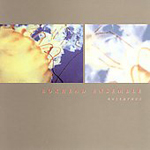|
|
 |
Dusted Reviews
Artist: Boxhead Ensemble Album: Nocturnes Label: Atavistic Review date: Oct. 1, 2006 |

|
|
|
 |
Like a botany student who applies his academic expertise to intensifying the yield of his pot crop or a chemistry grad who uses his knowledge of organic compounds in his search for the perfect home-brew formula, the Boxhead Ensemble’s Michael Krassner uses modern technology to enhance an ancient pleasure. His buzz of choice is rustic folk music, and he has devoted his last few albums to refining a blend of 19th century Americana and au courante ambience. While parts of Nocturnes would fit right into the soundtrack of Shelby Foote’s documentary on the American Civil War, the album is also very much a product of now; if studio treatments rendered music radioactive, it’d work your Geiger counter to the point off collapse.
On his other post-millennial efforts Two Brothers and Quartets, Krassner shuffled the Ensemble’s line-up from track to track like a basketball coach mixing up starters and players from the backbench in a quest for the right squad at the right moment. Apart from a few adroit contributions by percussionist Frank Rosaly and prepared piano player Jacob Koller, on Nocturnes he’s cut the team back to himself on guitar, organ, and manipulations and cellist Fred Lonberg-Holm.
Lonberg-Holm is best known as an improviser who runs with the likes of Ken Vandermark, but he is also well-steeped in the lore of American folk forms and tones. Most of the time he takes the foreground here, eschewing the agitated motion and extended techniques he uses in other contexts in order to play stark and slow-moving melodies radiant with resonance. Krassner accompanies the cello with a judiciously placed picking and blurry chords. Only on “Nocturne 4,” which sounds like a bumpy slow-motion collision between Alastair Galbraith and Lithops, do Krassner’s manipulations come into the foreground.
It’s not that Krassner can’t hack the spotlight; when he steps into the ring with Fred on nocturnes “3” and “6” the results bring to mind Richard Thompson and Danielle DeGruttola’s soulful sparring on Grizzly Man. But more often his impact is felt in the way the music blurs around the edges. It’s as though he had photographed the music rather than recording it, first snapping it through a lens smeared with vaseline, then photoshopping it into unnaturally elegant shape.
By Bill Meyer
|







